Athens-based visual artist Iasonas Kampanis discovered painting in two stages of his life: first as a child growing up in an artistic family, and later on as a young adult searching for his own expressive medium. Kampanis honed his technique gradually and over several years of teaching himself how to paint by studying the work of all the great artists he admired. Instead of simply copying existing works, he began referencing them in a more oblique way, or remixing them in combination with other visual references.
Thus, what began as a series of studies became an important part of his creative method, with research and collage being a main component of how he paints. In 2019 Kampanis completed a major work that takes his remixing skills to the extreme: titled 54, it is a large grid of 53 individual miniature paintings, each containing a narrative that is based on remixed online references from the recent history of western culture. Visitors at Platforms Project 2019 might remember this work from the booth of kunsthallekleinbasel.
To find out more about Kampanis and his creative process, we stepped into his studio and had a long discussion with him about art, his own ideas about the potential of painting, and his latest experiments with painting and photography.
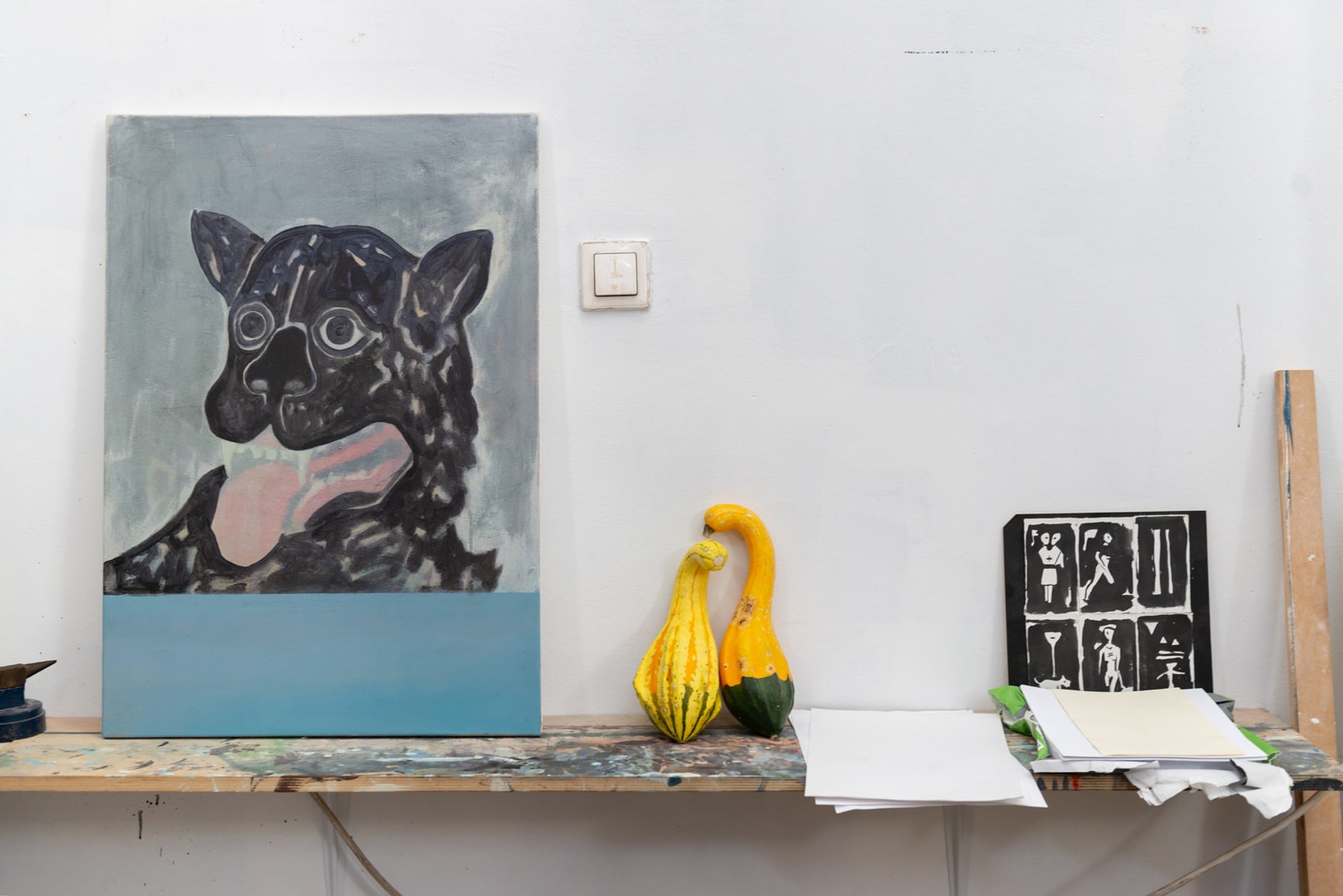
Going through your CV I noticed that you have no formal training in painting. How did you develop your technique?
One important thing is that my parents are artists. My father is a painter and printmaker, and my mother is a painter, illustrator and writer. I started by studying jewellery design. When I was 19 I went to visit a friend in Thessaloniki, I liked the city and decided to settle there. My parents of course cared about what I would study, not me though... I didn’t know what I wanted to study, but I knew that I didn't want to do my father's job. Also in my larger family there were many artists, sculptors, photographers, a theatre director etc.
You must have been to some very interesting family dinners.
Crazy, yes. Imagine landing in the midst of this; In a circle that you did not choose, you just happened to find yourself there, and you listen and observe everything they say and do, willingly or not. All these things are being recorded inside you. Some noteworthy Greek painters were friends of my parents — Katzourakis, Levidis, Hadjimichalis, whose work, coming later to painting, I rediscovered and learned from them. I grew up with these people, in their homes and in their workshops.
So yes, I studied jewellery design and silversmithing, my studies there were fantastic, especially the crafting part. But jewellery-making has its own limitations, and soon I felt a bit restricted artistically. Switching to sculpture or fashion was a possible next step. At some point I painted some backdrops for a jewellery exhibition—pieces of fabric to be placed behind the jewels. And that triggered me, quite unexpectedly. Then I met a girl studying at the Fine Arts school, we fell in love, and I entered this world for good. Painting, the construction of an image in general, seemed to me as if opening a window, a gate. And I thought: here I can do whatever I want.
When did that happen?
In 2007, and I've been learning since then. But I have had some experience before, drawing a lot from a young age. My father would take me along to help him since I was five, and he would often give me a brush to paint a little fish here and there. In high school I attended two years of drawing lessons in order to get myself into the Fine Arts school, but I never sat for that exam. So when I started painting, obviously the technique was evolving slowly, but I could feel that many things were already registered in my mind, guiding my hand; not only as a technique but also as knowledge. I had an opinion on painting, I had seen things. There was a lot of information in my head, and of course there was also difficulty in managing all that. There's a hard challenge there, not to become an imitator, or a reflection.
I believe that the point is not to seek doing different things from what others have done, as long as you try to evolve, to add. I have to manage the same thing, the information that is valuable to me, with which I will either deal impulsively, or from the 'researcher' side. Personally, I have a lot of fun with the latter!
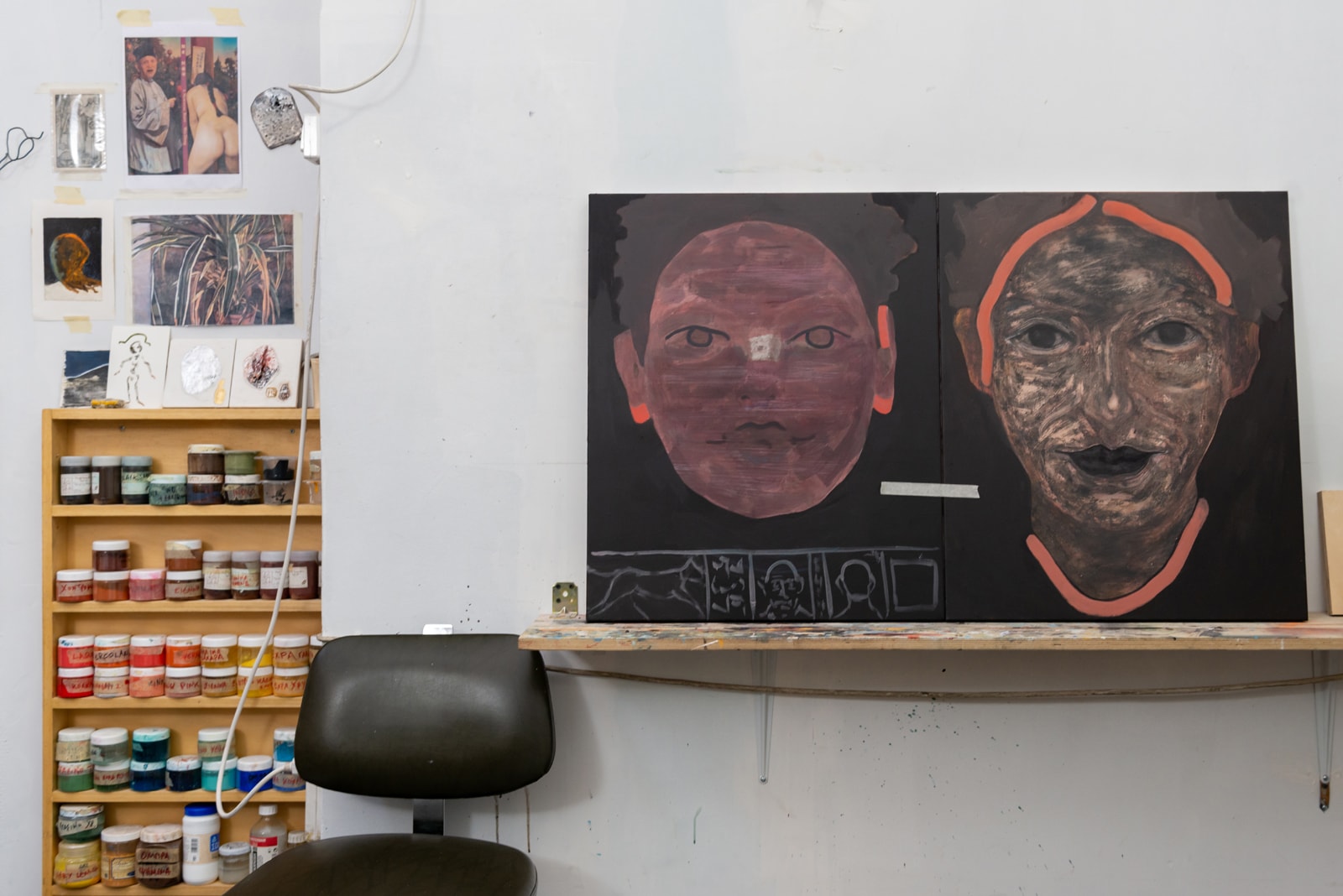
I love how you describe yourself as a researcher. It reveals your attitude regarding your practice. How do you define this research though? Are you an archaeologist, digging into tradition? Or maybe a naturalist, collecting and archiving bits and pieces of what you see?
Well, let's say I place on the side something that I'm making and look at it. I will decide that it has finished when it stops being boring. A painting remains boring when it doesn't add to anything, when the influence of my inspiration is still more intense than my own intervention. If I then find it difficult to continue spontaneously, I look at other things, often irregular or irrelevant and try to attach them in there to relate them with the rest. I love inconsistency in the semantics and in the way something is staged. This is what I’ve realised I'm exploring, the relationships between things.
The way you describe it reminds me of collage. It's like working on Photoshop and mixing things, moving them around. Is that how you make a painting?
Yes, that's right.
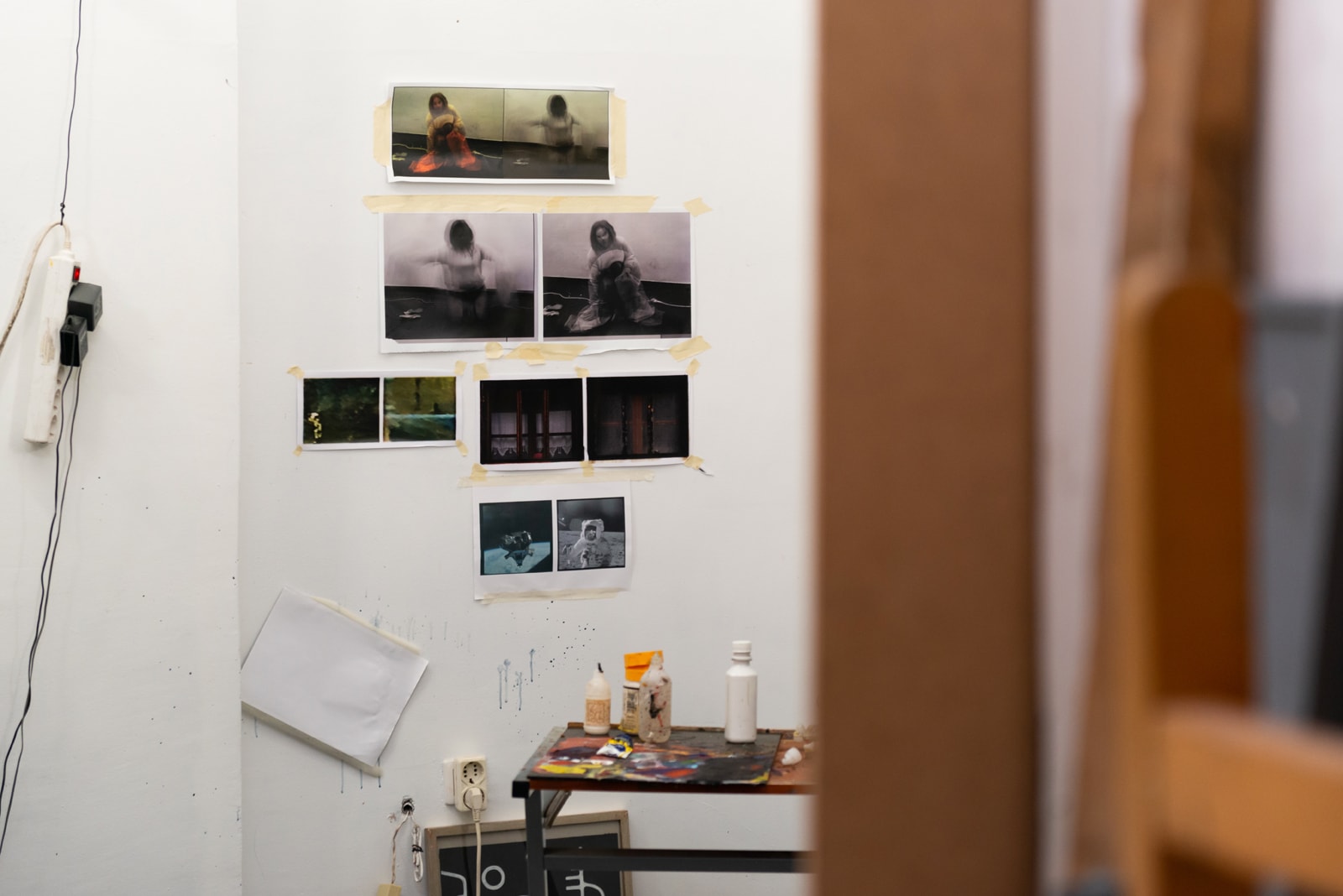
It also looks like each of your paintings is a tribute to another artist.
I taught myself to paint by trying out things that other people have done. Copying paintings was boring, so I began having fun with it, mixing stuff. In a way, most of these tributes are studies. But I see this to be changing now, from different adhesives and brighter colours, to different thematic concerns.
So how do you find your references? I know that you used Google a lot for 54.
Yes, but 54 was a bit of an exaggerated use of the search engine. I mean, I was aware of just how googling was becoming part of my process. I began working on 54 in 2016. It was the time when I decided to try and refrain from using other people as references and do something else. So I thought that if I made a work that uses art history references to the extreme, I would get over it [laughs].
54 is based on elements from the lives and work of artists, painters, musicians and so on. I created a list with the names of various artists and people I admire, sorting them by common death or birth dates. Then I read about their lives, looking at images in search engines, associating information, and organised all this material per common week. Each painting corresponds to a week of the year and has its own narrative. For example, one piece is about Georgia O'Keefe, who had an affair with Paul Strand and she was then married to Alfred Stieglitz, a close friend of Strand. So you have an important painter who has been photographed in very private moments by two important photographers. I used a photo of O'Keefe taken by Stieglitz. I thought it would be nice to turn it into a painting. I added the red mark because I wanted it to have something spontaneous there, something that I cannot explain.
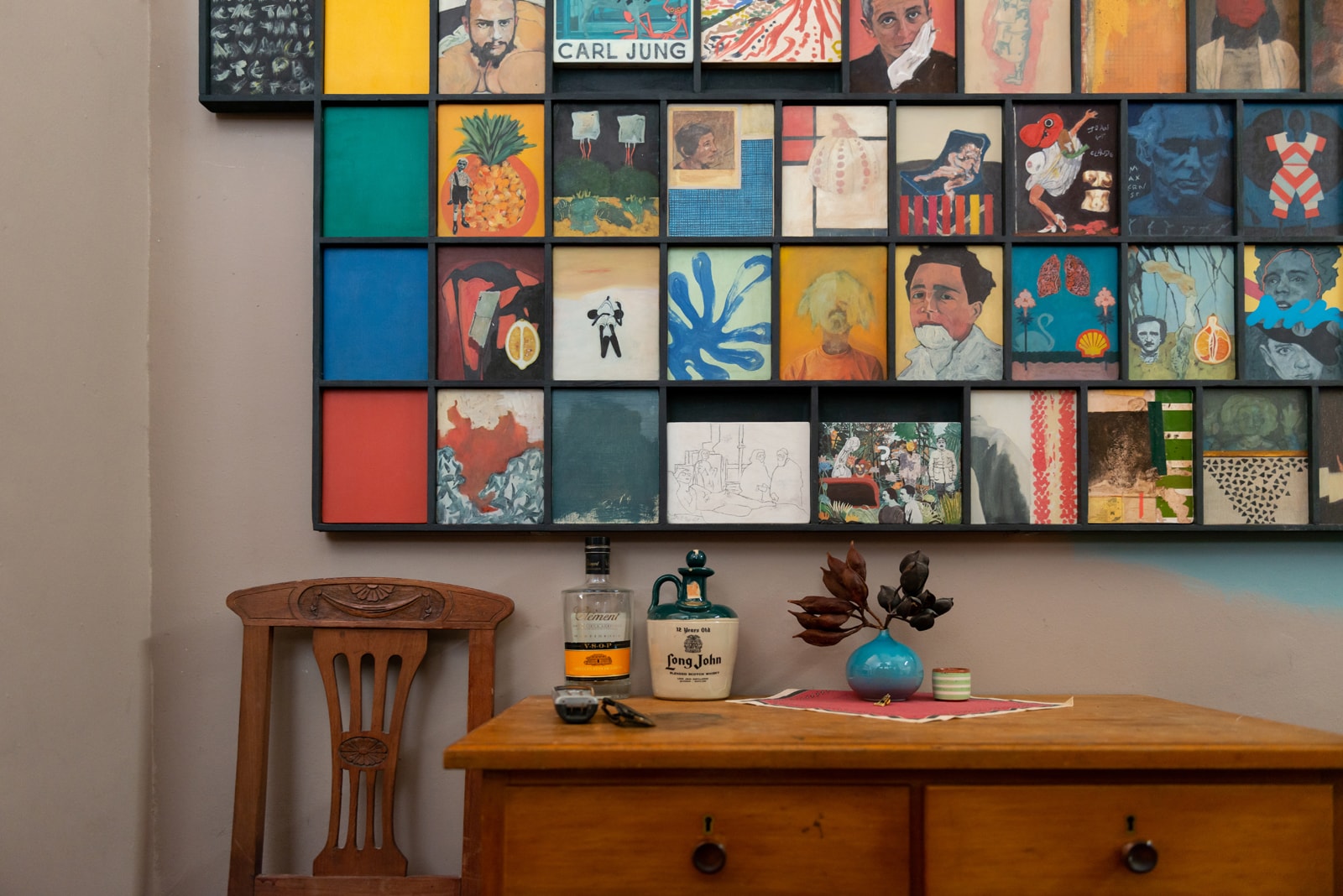
So it was an exercise in making random things connect.
Also to force myself to choose information randomly, to deter myself from selecting the material very thoroughly. The structure of the work is like a calendar, with the weeks of the year, and each piece refers to facts and people related to one specific week. I wanted to do something with whatever material I collected after a week's worth of random googling. There are 52-53 weeks in a year, therefore 53 pieces plus all of them as a whole, the 54th.
There's also an okra in there.
The okra! Well I added many little elements that are seemingly unrelated to the references I mostly used, like lemons and broccoli. This particular painting was completed during okra season, that's why. I tried to make things fast, to make decisions fast. At the same time I wanted to avoid a very obvious personal involvement. That’s also the main thing I like in conceptual art works. The imposition of the artist's personal vision is not as present there as it is in other visual art forms. Art can also function as a tool for the viewer to achieve a purely personal experience. The artwork should be a medium, like an elevator: you can use the elevator to reach a certain floor but it can't tell you where to go.
It also has to do with what the artist needs. Especially nowadays, when everything is possible, it's all about the choices the artist makes. If you want to bring eight tonnes of marble in a gallery you can do that. But then you need to ask why.
That's a long conversation, especially nowadays it's very pertinent. In previous times an artist didn't have to defend his choice as much as he had to justify his confidence. Which also related to when an artist showed work and where. Today things seem to me a bit different. For example, the concept of showing a body of work not as a whole but scattered in many exhibitions. Also, we often miss the reason for when you're ready to show. Today there's no sense of being ready or not; it’s like you are always ready somehow. And that's false. How can you always be ready, pick up these two panels for example and go exhibit? There's finished work and unfinished work, and what you choose to show as finished is important.
I think there's also a certain superficiality in how we do exhibitions in Athens. We're caught up in a situation where some things can pass very easily, like to show more often and with less focus, even exhibiting work in progress. No matter how reasonable and fair this may be, it would be great to remember not to force things that are not yet resolved—and I'm not talking about technique or display. Artist-run spaces often show things in progress or expose the creative process and so on, and that's the perfect place to do that. And that’s a very good thing, especially if the initiator’s intention is not self-promotion. However, I think we're a bit over-consumed by showing everywhere and in every given opportunity.
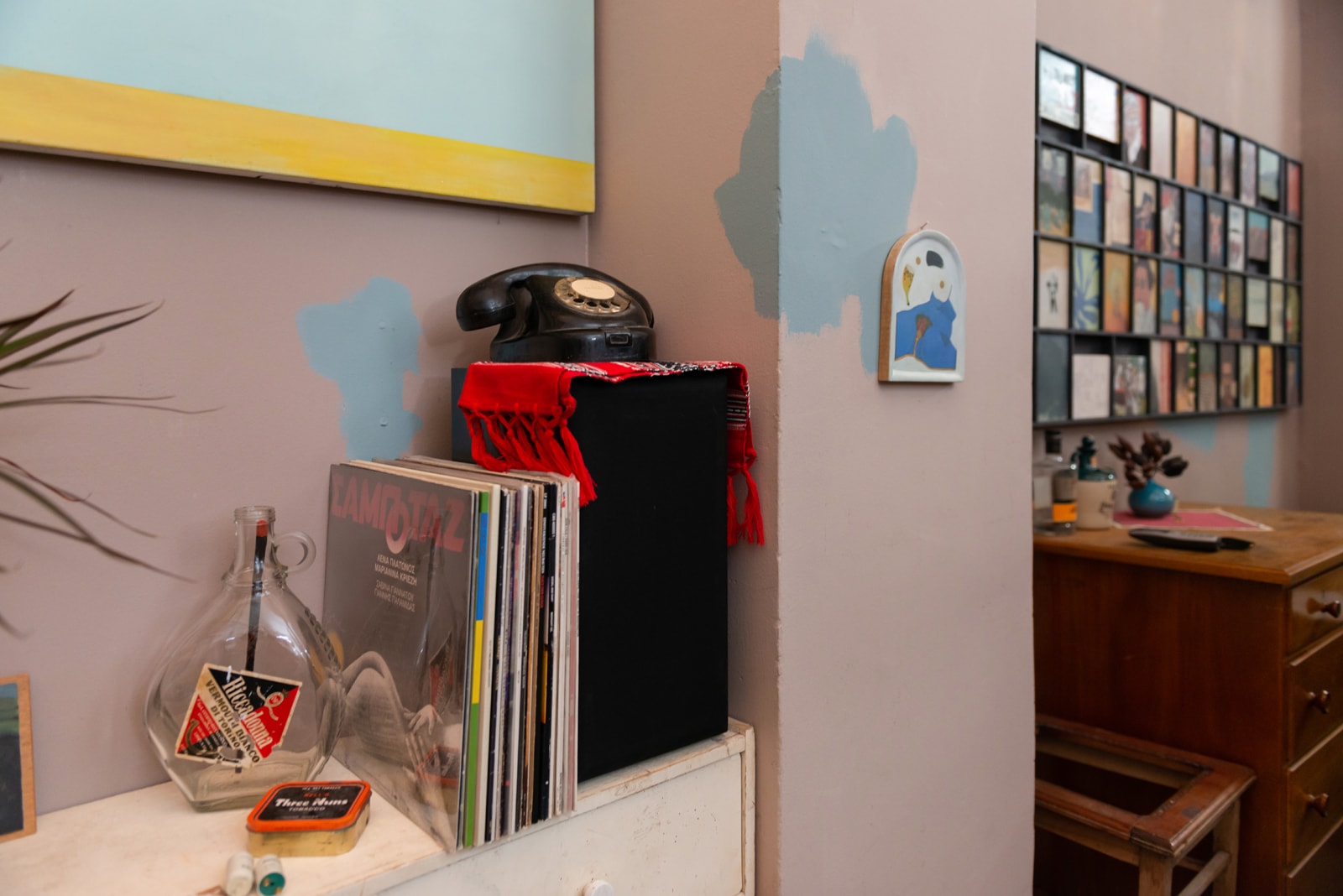
I personally believe there is some value in showing unfinished work and ideas. It's important for a young artist to have the opportunity to see their work installed in a space. To engage in dialogue, expose it in ways other than in the studio. Hanging your own exhibition has its own learning curve.
There is sense in showing work in progress, a sort of pre-vernissage, or to participate in collective shows and workshops in such spaces, but I disagree with organising a solo show in that manner. And it is a good thing to get some installation views of your work, do a few more public relations, print a DIY catalog, and all to get by with a little help from my friends. I may sound sarcastic, but it’s the superficiality that annoys me, not the noble causes.
You said earlier that you are now moving away from using art-history references. Have you then found a new direction for your work?
Ideas on referencing ‘’the history of art" or "other people's work" contain wider questions, like how different art forms relate to one another. In the case of images, I'm interested in the relationship between painting and photography. It's not a novel question, such comparisons have been made extensively in the past, by artists such as Duchamp or Hamilton, but it's important for me to work on this. Photography became part of my practice while staying in the UK, where I didn't have much room to paint so I turned to digital tools and manipulating photographs. I was producing images by taking photos, tweaking or heavily distorting them, and this was a painting process for me. The edited photo was the final work. Now I’m working on diptychs, on how a processed photograph can stand next to a painting based on the same photoshoot. They will be large in scale, I want to complete a few and see what comes out. This is a new page for me.
Thank you.
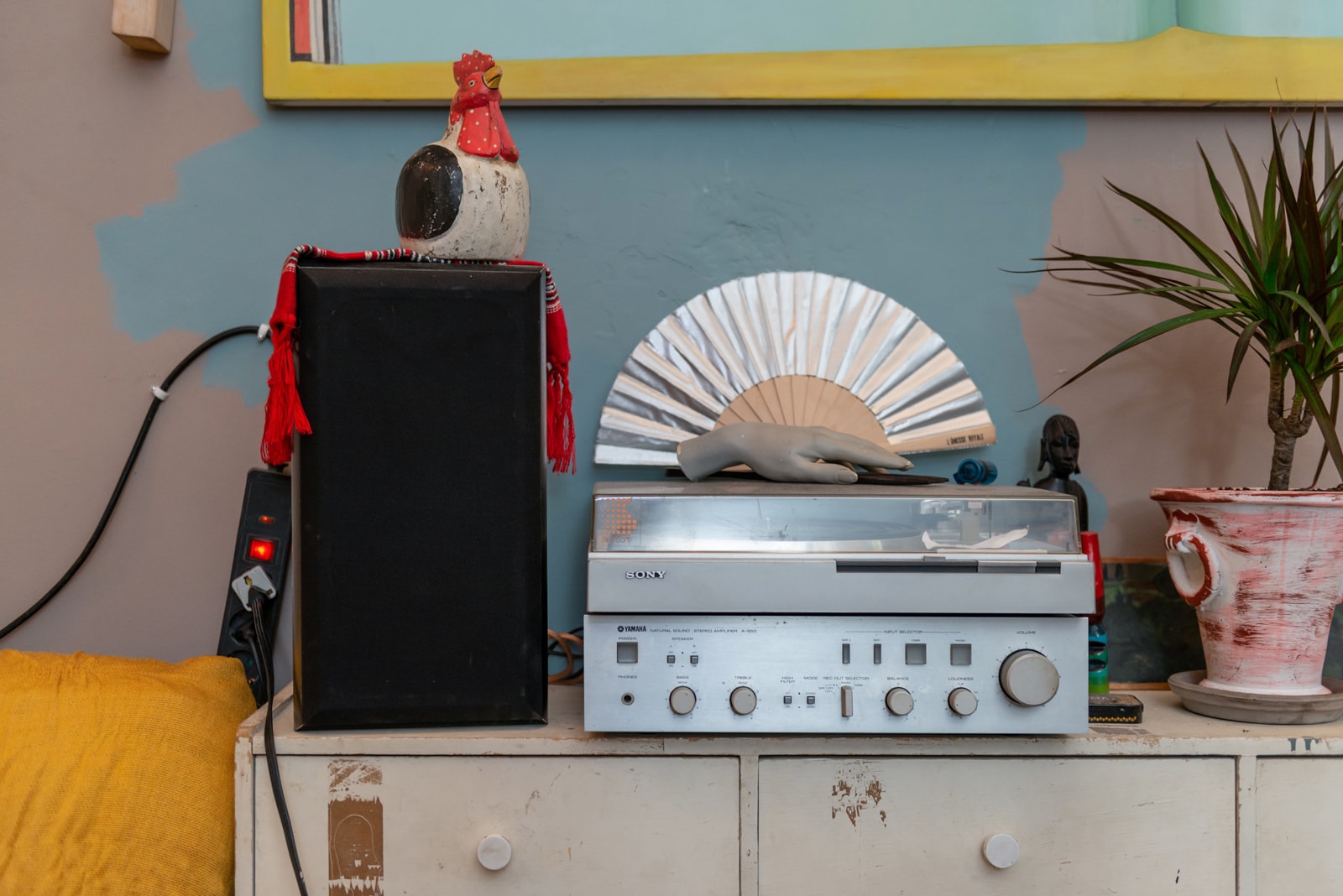
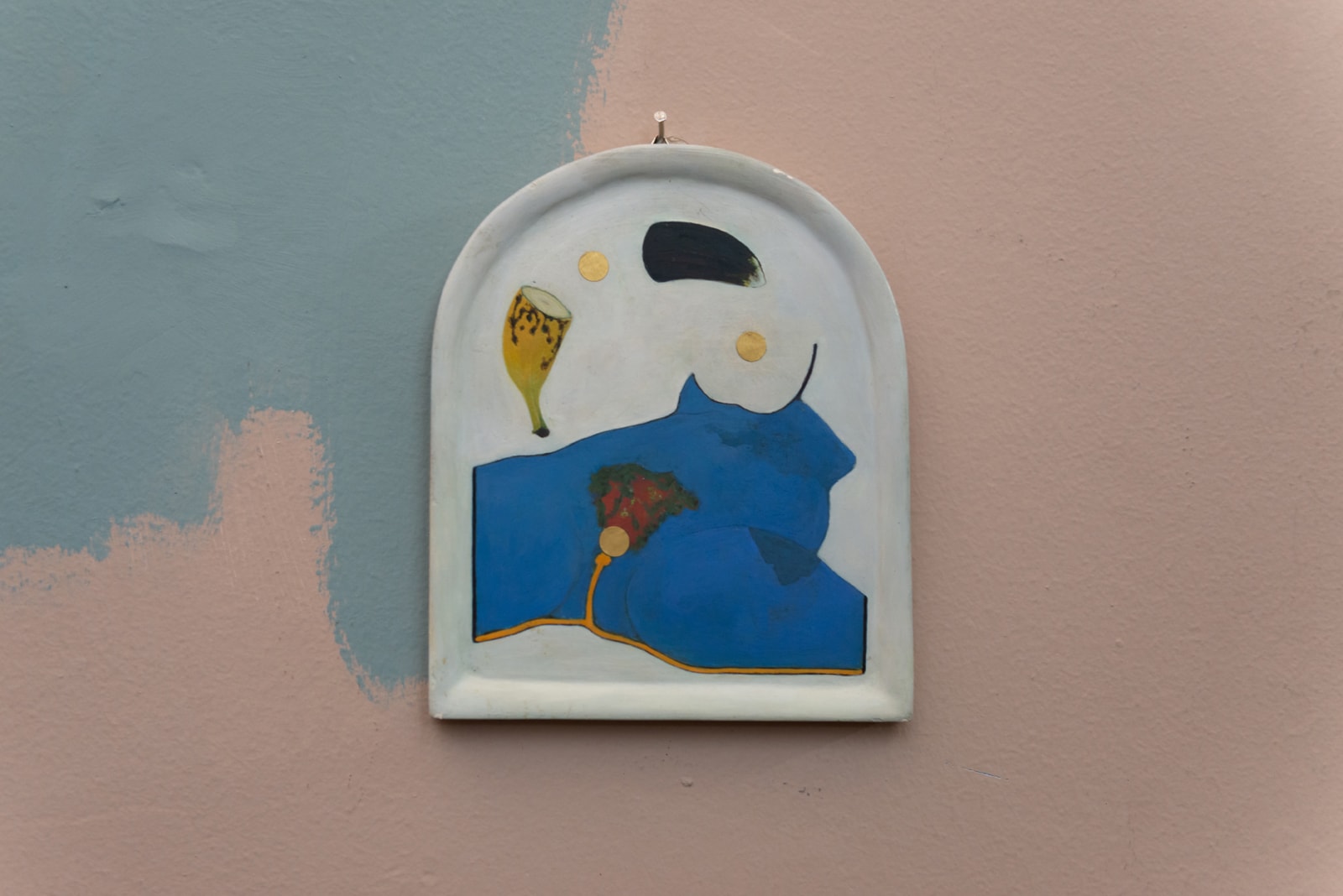
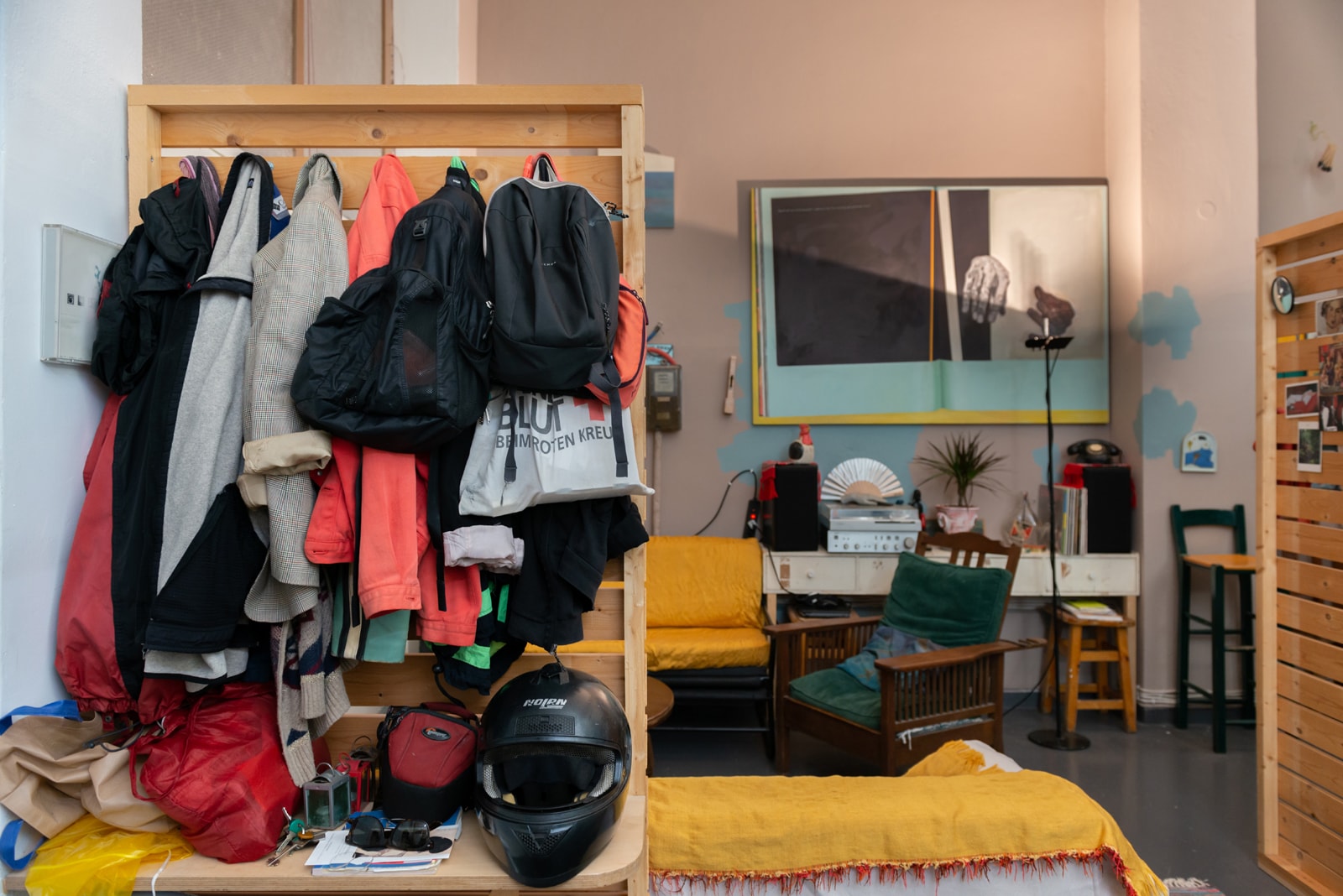
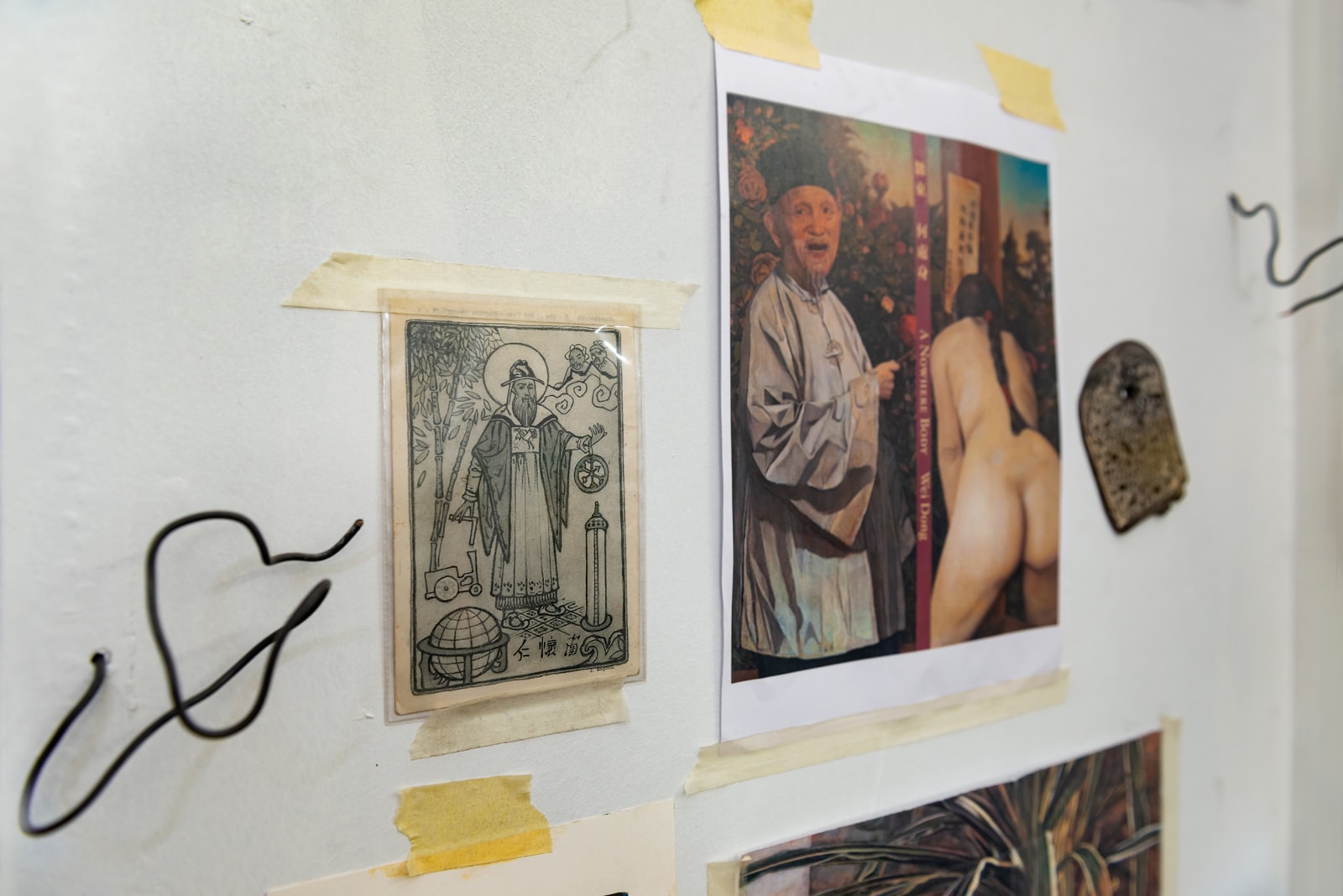
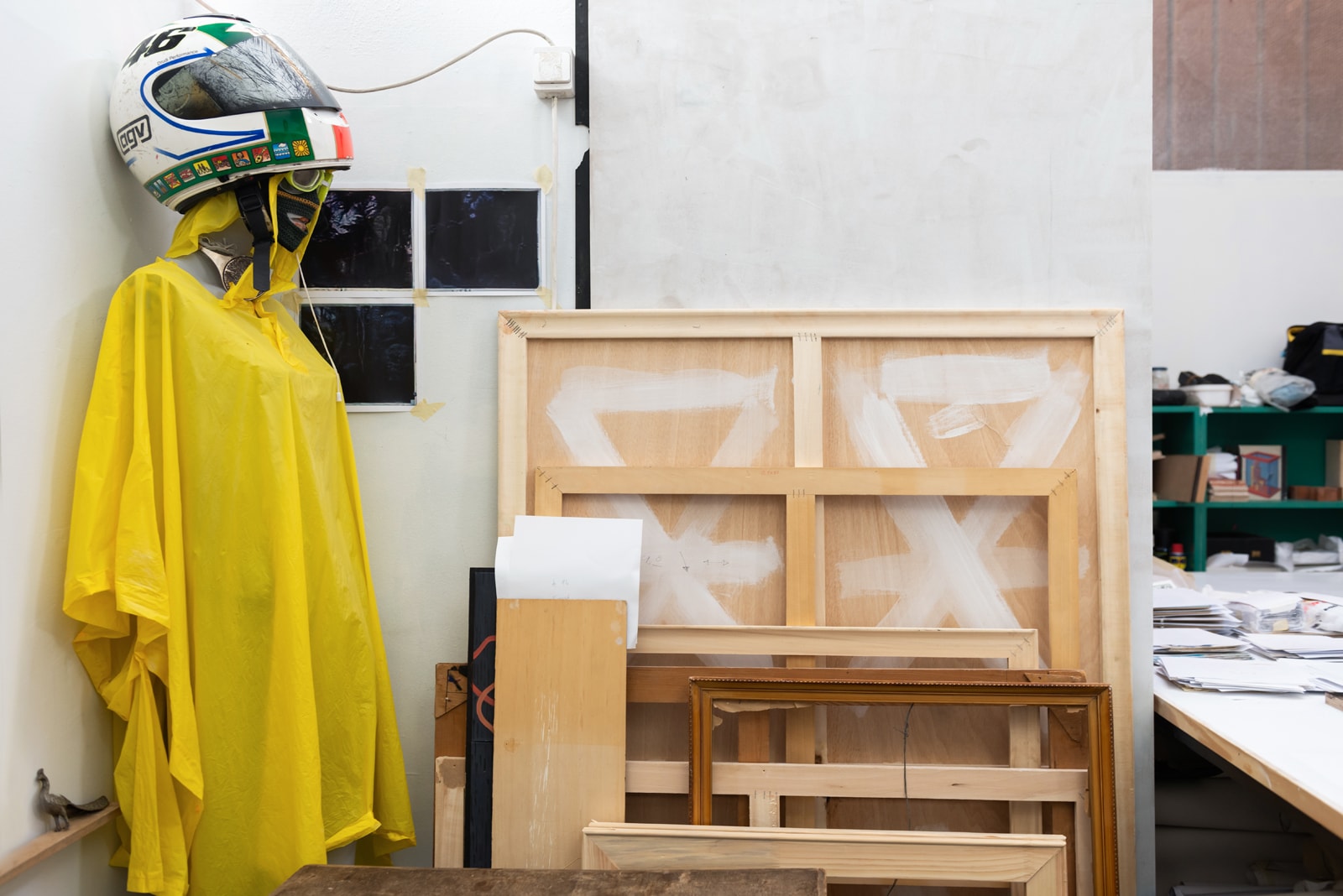
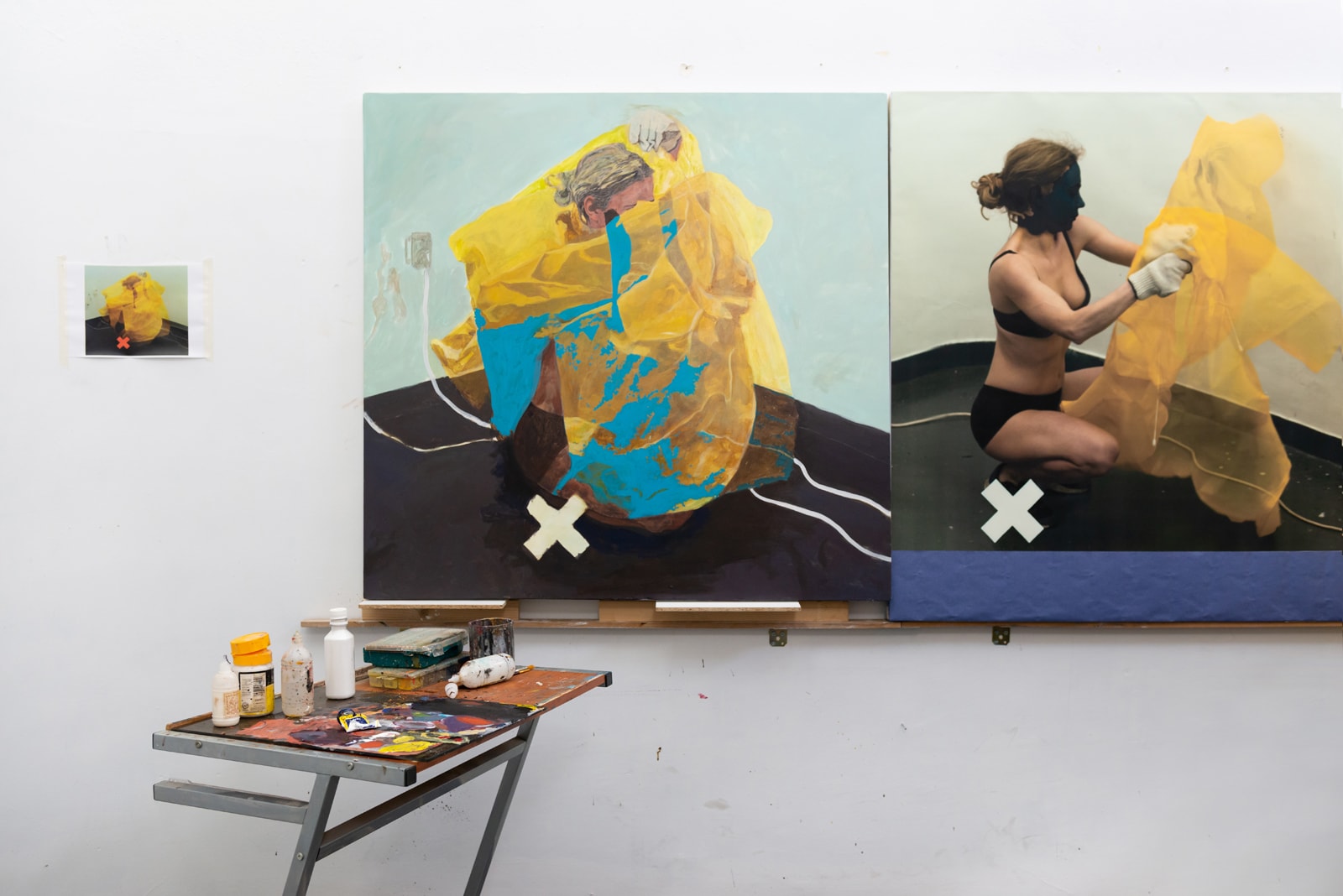
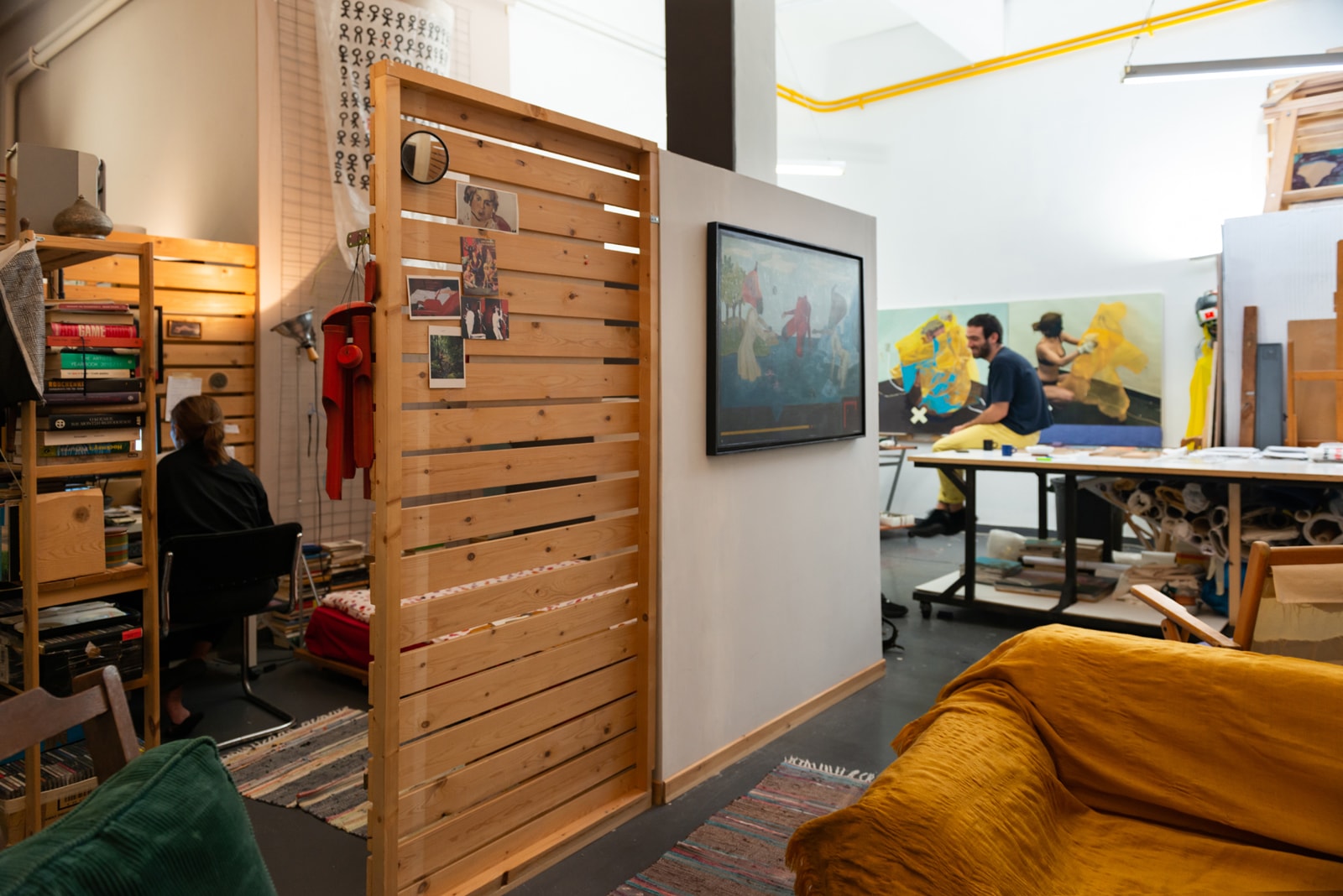
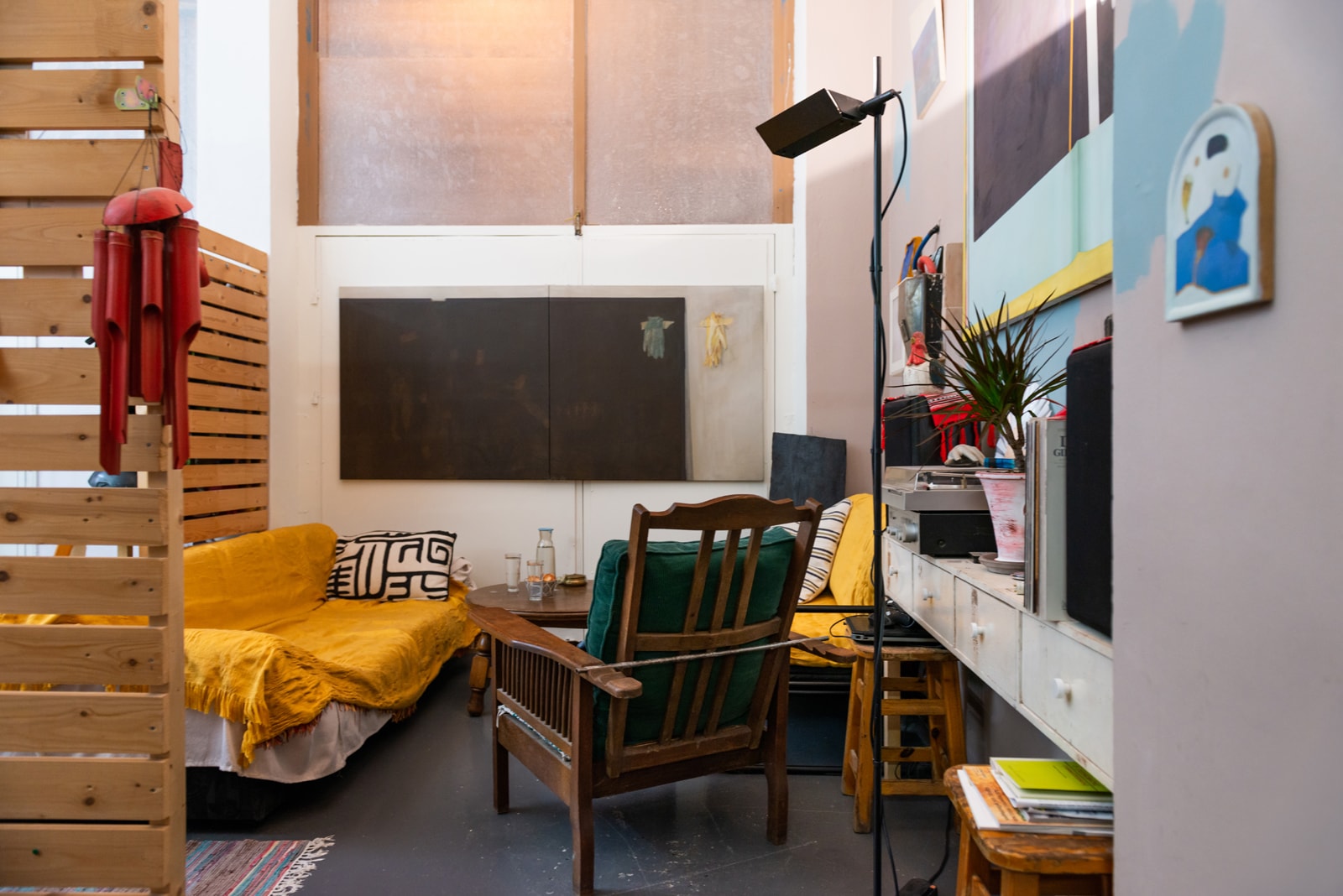
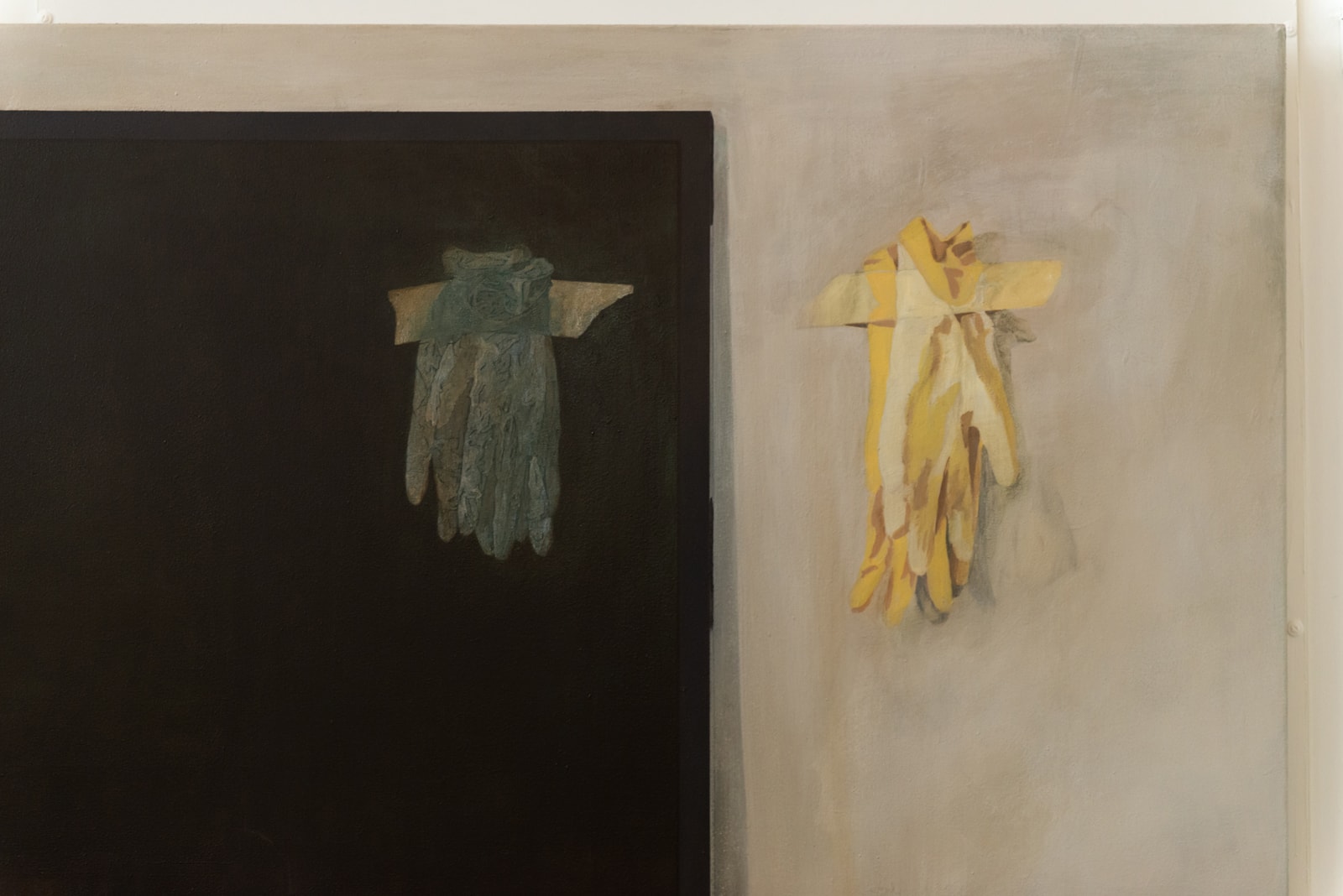
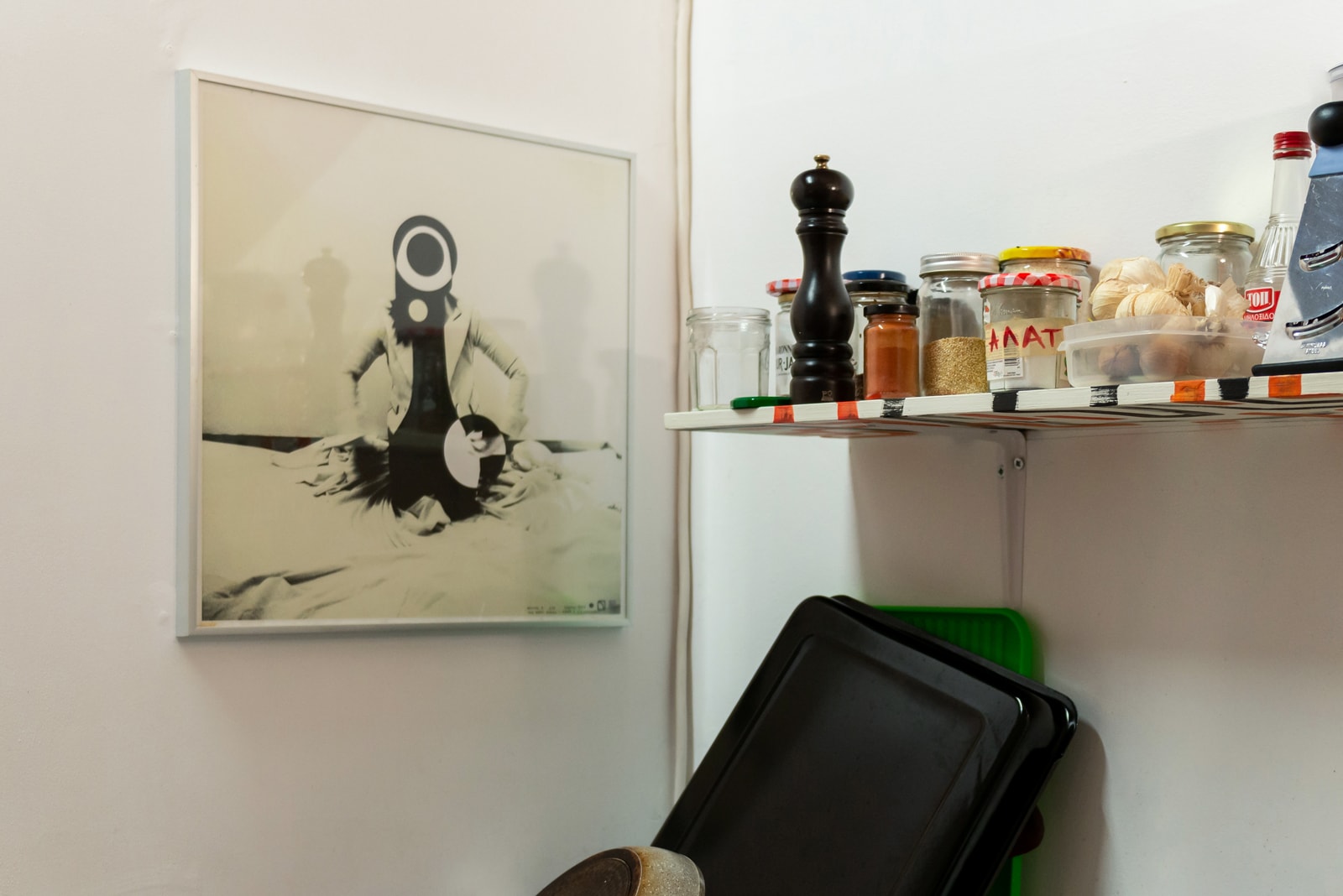
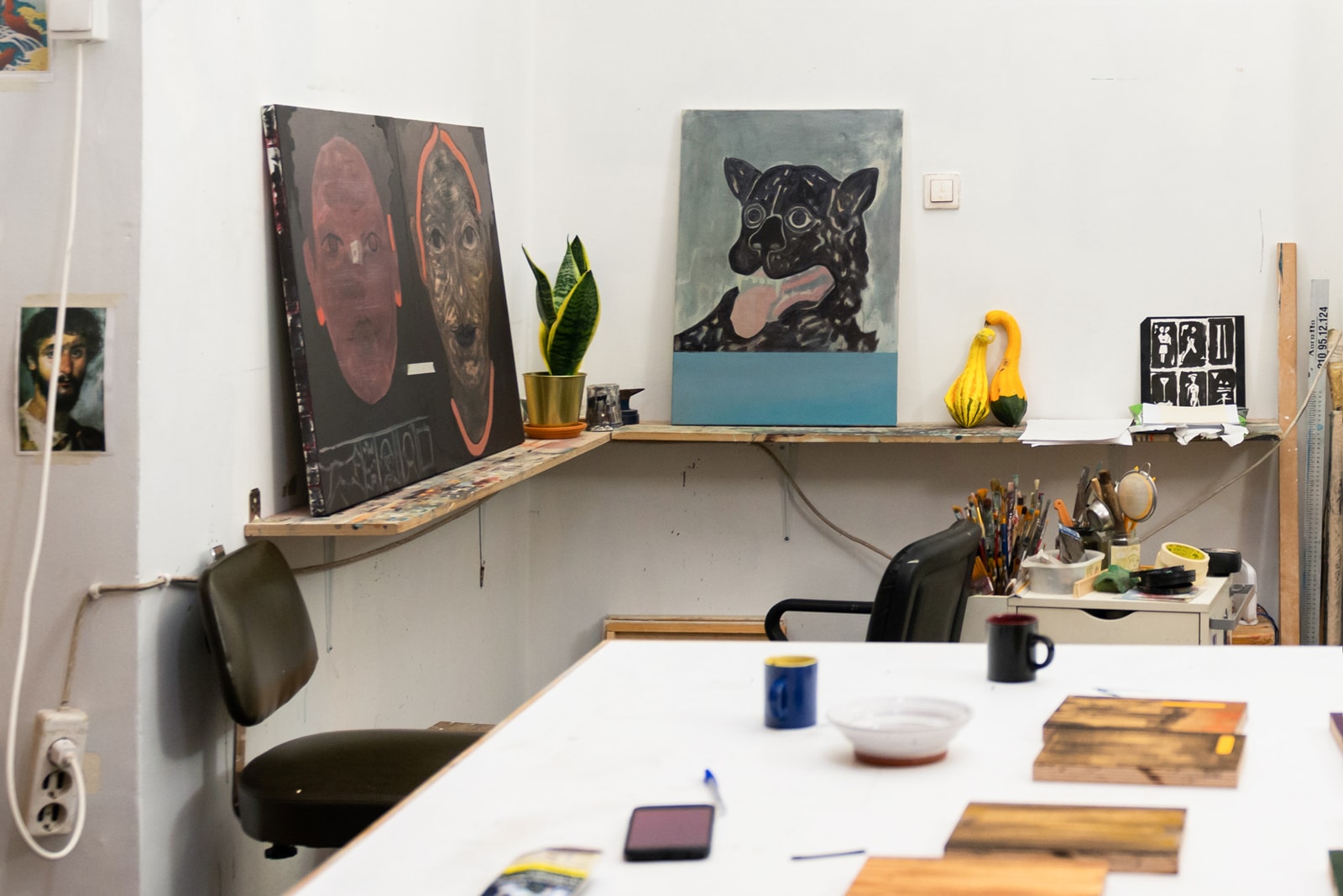
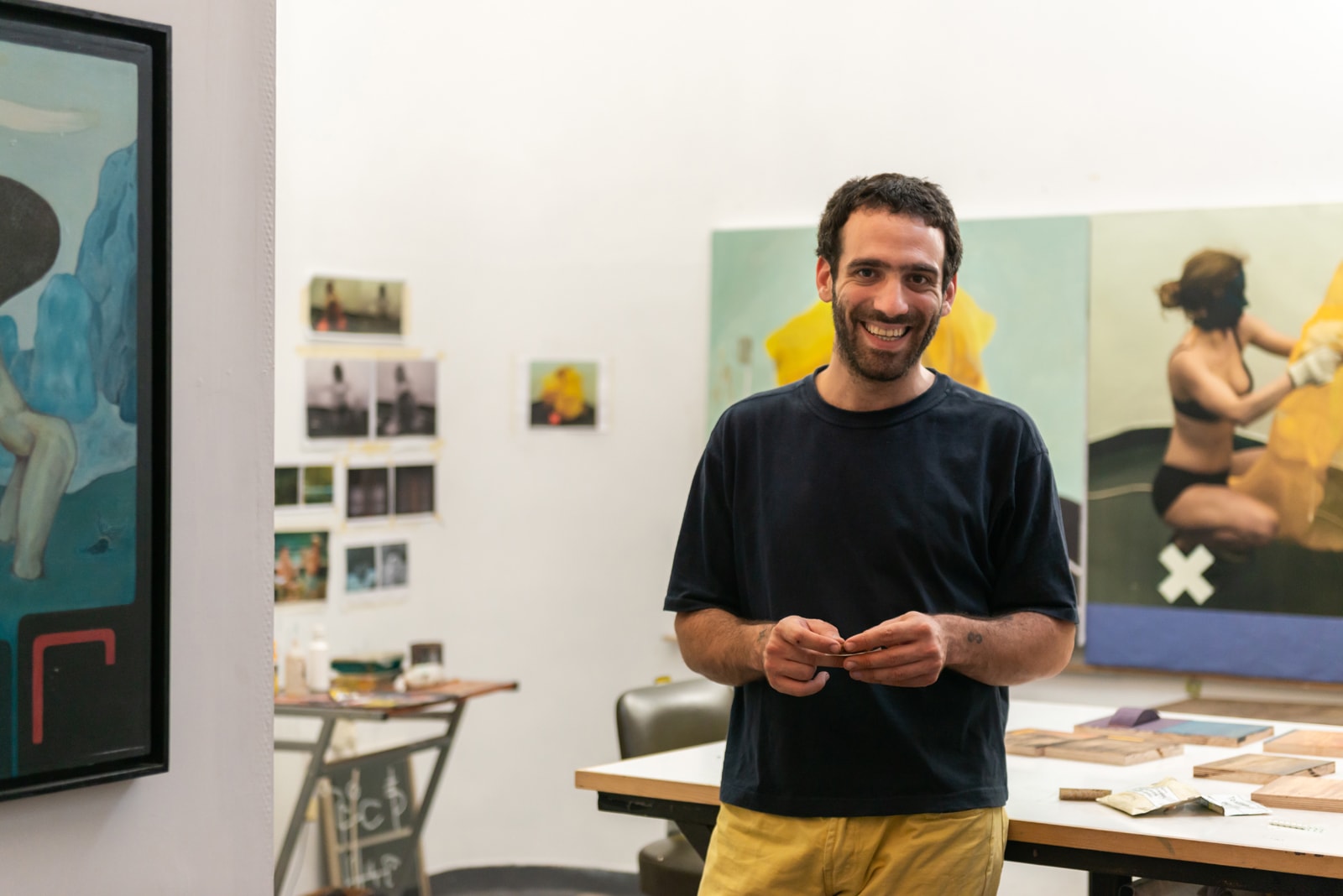
Updated 17 September 2022: A section of the interview has been removed at the artist's request.
